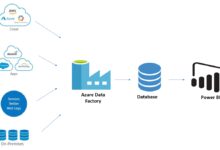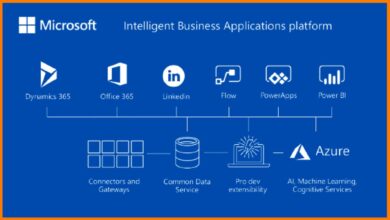msft azure: 7 Powerful Reasons to Choose Microsoft’s Cloud
Cloud computing isn’t just the future—it’s the present. And when it comes to dominating the cloud space, msft azure stands tall alongside giants like AWS and Google Cloud. But what makes it truly special? Let’s dive deep into why msft azure is reshaping how businesses scale, innovate, and secure their digital futures.
What Is msft azure and Why It Matters

At its core, msft azure is Microsoft’s comprehensive cloud computing platform, offering over 200 services ranging from virtual machines to AI tools. Launched in 2010 as Windows Azure, it has evolved into a global powerhouse, serving millions of customers across 60+ regions.
Evolution from Windows Azure to msft azure
Originally introduced as Windows Azure, the platform was rebranded to Microsoft Azure in 2014 and is now commonly referred to as msft azure in technical and financial circles. This rebranding wasn’t just cosmetic—it reflected a strategic shift from being a platform focused on Windows-based applications to a fully agnostic, hybrid-ready cloud ecosystem.
The evolution included support for Linux, open-source technologies, and multi-cloud integration, making msft azure one of the most flexible platforms available today. You can learn more about its history on the official Microsoft Learn portal.
Core Services Offered by msft azure
msft azure isn’t just about hosting websites or running servers. It’s a full-stack solution that includes:
- Compute: Virtual Machines, Azure Functions, App Services
- Storage: Blob Storage, Disk Storage, Data Lake
- Networking: Virtual Networks, Load Balancers, Azure DNS
- AI & Machine Learning: Azure Cognitive Services, Azure ML Studio
- Security: Azure Active Directory, Sentinel, Defender for Cloud
Each service is designed to work seamlessly with others, enabling developers and enterprises to build complex, scalable systems without reinventing the wheel.
Global Reach and Data Center Infrastructure
One of msft azure’s biggest advantages is its global footprint. With data centers in over 60 regions worldwide—including recent expansions in Africa, India, and Southeast Asia—it ensures low-latency access and compliance with local data regulations.
“Azure is available in more countries than any other cloud provider.” — Satya Nadella, CEO of Microsoft
This widespread presence allows organizations to deploy applications closer to their users, improving performance and meeting strict data sovereignty laws like GDPR and HIPAA.
msft azure vs AWS: The Cloud Battle
The rivalry between msft azure and Amazon Web Services (AWS) is one of the most watched in tech. While AWS leads in market share, msft azure is rapidly closing the gap thanks to its hybrid capabilities and deep integration with Microsoft’s enterprise software suite.
Market Share and Competitive Positioning
According to Synergy Research Group (2023), AWS holds about 32% of the global cloud infrastructure market, while msft azure follows with around 23%. Google Cloud trails at 10%, making the competition largely a two-horse race.
What sets msft azure apart is its strong foothold in enterprise environments. Many Fortune 500 companies already use Microsoft products like Office 365, Active Directory, and Dynamics 365—making the transition to msft azure smoother and more cost-effective.
Hybrid Cloud Advantage of msft azure
Unlike AWS, which is primarily public cloud-focused, msft azure excels in hybrid cloud scenarios. Azure Stack allows businesses to run Azure services on-premises, giving them the flexibility to keep sensitive data in-house while still leveraging cloud scalability.
This hybrid model is particularly attractive to industries like finance, healthcare, and government, where regulatory compliance is non-negotiable. For example, banks can process transactions locally while using msft azure for analytics and disaster recovery.
Integration with Microsoft Ecosystem
Perhaps the strongest selling point of msft azure is its native integration with Microsoft tools. Need to sync user identities across your network? Azure Active Directory connects seamlessly with on-prem AD. Using Power BI for analytics? It’s built into the Azure ecosystem.
Additionally, developers using Visual Studio or GitHub will find Azure DevOps tightly integrated, streamlining CI/CD pipelines. This level of cohesion reduces friction and training costs, accelerating time-to-market for new applications.
Key Benefits of Using msft azure
Choosing a cloud provider is a strategic decision. With msft azure, organizations gain more than just infrastructure—they gain agility, security, and innovation at scale.
Scalability and Elasticity
msft azure enables automatic scaling based on demand. Whether you’re running a small web app or a global e-commerce platform, Azure can dynamically allocate resources during traffic spikes and scale down during lulls.
For instance, during Black Friday sales, retailers using msft azure can spin up thousands of virtual machines in minutes, then decommission them just as quickly. This elasticity translates to cost savings and uninterrupted customer experiences.
Cost Efficiency and Pricing Models
msft azure offers multiple pricing models: pay-as-you-go, reserved instances, and spot pricing. This flexibility allows businesses to optimize costs based on usage patterns.
The Azure Pricing Calculator is a powerful tool that helps estimate monthly costs before deployment. Additionally, Microsoft offers significant discounts for non-profits, startups (via Azure for Startups), and educational institutions.
Compared to maintaining on-prem servers, msft azure eliminates upfront capital expenses and shifts IT spending to operational expenses—a major advantage for budget-conscious organizations.
Reliability and Uptime Guarantees
msft azure guarantees 99.9% uptime for most services, with some like Azure SQL Database offering up to 99.99%. These SLAs (Service Level Agreements) are backed by financial credits if not met.
Moreover, Azure uses redundant architectures across availability zones—physically separate data centers within a region. If one fails, traffic automatically reroutes to another, ensuring continuous operation.
Security and Compliance in msft azure
In an era of rising cyber threats, security is paramount. msft azure provides a robust, multi-layered security framework that protects data at rest, in transit, and during processing.
Built-in Security Features
msft azure comes equipped with advanced security tools out of the box:
- Azure Defender: Unified security management and threat protection across hybrid cloud workloads.
- Azure Firewall: Managed, cloud-native firewall service with built-in high availability.
- DDoS Protection: Shields applications from distributed denial-of-service attacks.
- Private Link: Enables private connectivity to Azure services, reducing exposure to the public internet.
These features help organizations defend against common attack vectors without needing third-party tools.
Compliance Certifications
msft azure holds more compliance certifications than any other cloud provider, including ISO 27001, SOC 1/2/3, HIPAA, GDPR, FedRAMP, and CCPA. This makes it ideal for regulated industries.
For example, healthcare providers can confidently store patient records in Azure, knowing it meets HIPAA requirements. Similarly, European companies can ensure GDPR compliance through Azure’s data residency and encryption policies.
A full list of certifications is available on the Microsoft Compliance Manager page.
Identity and Access Management with Azure AD
Azure Active Directory (Azure AD) is the backbone of identity management in msft azure. It supports single sign-on (SSO), multi-factor authentication (MFA), conditional access policies, and identity governance.
Organizations can enforce rules like “block login from unknown devices” or “require MFA for admin accounts,” significantly reducing the risk of unauthorized access. With over 1.4 billion identities managed daily, Azure AD is one of the most trusted identity platforms globally.
msft azure for Developers and DevOps
msft azure isn’t just for IT departments—it’s a developer’s playground. From code to deployment, Azure streamlines the entire software development lifecycle.
Azure DevOps and CI/CD Pipelines
Azure DevOps provides a suite of tools for planning, developing, testing, and deploying applications. Teams can use Boards for agile project management, Repos for Git-based version control, and Pipelines for automated builds and releases.
For example, a developer can push code to GitHub, trigger an Azure Pipeline, run automated tests, and deploy to production—all without manual intervention. This continuous integration and delivery (CI/CD) model accelerates development cycles and improves software quality.
Serverless Computing with Azure Functions
Serverless computing allows developers to run code without managing servers. Azure Functions lets you execute small pieces of code (functions) in response to events like HTTP requests, database changes, or file uploads.
This event-driven model is perfect for microservices architectures. You only pay when the function runs, making it highly cost-efficient for sporadic workloads. Plus, it scales automatically—no need to worry about provisioning.
Containerization and Kubernetes with AKS
Azure Kubernetes Service (AKS) simplifies container orchestration. Developers can deploy, manage, and scale Docker containers using Kubernetes, all within the msft azure environment.
AKS handles critical tasks like health monitoring, auto-scaling, and upgrades, freeing teams to focus on application logic. Combined with Azure Container Registry and Helm, AKS provides a complete container ecosystem.
AI and Machine Learning Capabilities in msft azure
msft azure is at the forefront of democratizing artificial intelligence. Its AI and ML tools empower businesses to build intelligent applications without needing a PhD in data science.
Azure Cognitive Services Overview
Azure Cognitive Services offer pre-built APIs for vision, speech, language, and decision-making. For example:
- Computer Vision: Analyze images for objects, faces, or text.
- Text Analytics: Detect sentiment, key phrases, and language in text.
- Speech to Text: Convert spoken audio into written text in real time.
- Translator: Provide real-time language translation for apps.
These APIs can be integrated into apps with just a few lines of code, enabling features like voice assistants, content moderation, and customer sentiment analysis.
Building Custom Models with Azure Machine Learning
For more advanced use cases, Azure Machine Learning Studio provides a drag-and-drop interface or code-based environment (Python, R) to build, train, and deploy custom ML models.
Data scientists can use automated ML to find the best algorithm for their dataset, or leverage MLOps to monitor model performance in production. The platform also supports responsible AI principles, helping detect bias and ensure fairness.
Real-World AI Applications on msft azure
Companies are already using msft azure’s AI in innovative ways:
- Healthcare: Mayo Clinic uses Azure AI to analyze medical images and predict patient outcomes.
- Retail: Walmart leverages Azure ML for demand forecasting and inventory optimization.
- Manufacturing: Rolls-Royce uses Azure IoT and AI to monitor jet engine performance in real time.
These examples show how msft azure turns data into actionable insights, driving efficiency and innovation.
Industry-Specific Solutions Powered by msft azure
msft azure isn’t a one-size-fits-all platform. It offers tailored solutions for various industries, addressing unique challenges and regulatory needs.
msft azure in Healthcare
In healthcare, msft azure enables secure storage of electronic health records (EHR), telemedicine platforms, and AI-driven diagnostics. The Azure Health Data Services platform helps hospitals aggregate and analyze clinical data while maintaining HIPAA compliance.
For example, Partners HealthCare uses msft azure to process genomic data for personalized medicine, reducing analysis time from weeks to hours.
Financial Services and Banking on msft azure
Banks and fintech companies use msft azure for fraud detection, risk modeling, and customer analytics. JPMorgan Chase, one of the largest banks in the U.S., runs critical workloads on Azure, citing its security and scalability.
Azure’s confidential computing capabilities allow banks to process sensitive data (like credit scores) in encrypted form, even during computation—ensuring privacy without sacrificing performance.
Government and Public Sector Adoption
Government agencies worldwide trust msft azure for citizen services, emergency response systems, and digital transformation. The UK’s National Health Service (NHS) uses Azure to power its digital health portal, serving millions of patients.
Azure Government is a dedicated cloud for U.S. government entities, meeting stringent requirements like FedRAMP High and DoD IL5. This isolated environment ensures data never leaves sovereign borders.
Future Trends and Innovations in msft azure
msft azure isn’t standing still. Microsoft continues to invest billions annually in R&D, pushing the boundaries of what’s possible in cloud computing.
Quantum Computing with Azure Quantum
Azure Quantum is Microsoft’s bold entry into quantum computing. While still in early stages, it allows researchers and developers to experiment with quantum algorithms using hardware from partners like IonQ and Quantinuum.
Though practical applications are years away, quantum computing could revolutionize fields like cryptography, drug discovery, and logistics optimization. Azure provides a sandbox for organizations to prepare for this future.
Edge Computing and Azure IoT Edge
As more devices go online, processing data at the edge—close to where it’s generated—becomes crucial. Azure IoT Edge allows you to run AI models and cloud services directly on devices like sensors, cameras, and industrial machines.
For example, a factory can use Azure IoT Edge to detect equipment anomalies in real time, preventing costly downtime. This reduces latency and bandwidth usage compared to sending all data to the cloud.
Sustainability and Green Cloud Initiatives
Microsoft has committed to being carbon negative by 2030 and removing all historical emissions by 2050. msft azure plays a key role in this mission through energy-efficient data centers powered by renewable energy.
Azure’s sustainability calculator helps customers measure their carbon footprint and identify ways to reduce it. By choosing msft azure, businesses aren’t just modernizing—they’re contributing to a greener planet.
What is msft azure?
msft azure is Microsoft’s cloud computing platform that provides a wide range of services including computing, storage, networking, AI, and security. It enables businesses to build, deploy, and manage applications across a global network of data centers.
How does msft azure compare to AWS?
While AWS leads in market share, msft azure excels in hybrid cloud capabilities and integration with Microsoft products like Office 365 and Active Directory. It’s often preferred by enterprises already invested in the Microsoft ecosystem.
Is msft azure secure?
Yes, msft azure offers robust security features including Azure Defender, Azure AD, and DDoS protection. It holds more compliance certifications than any other cloud provider, making it suitable for highly regulated industries.
Can startups use msft azure?
Absolutely. Microsoft offers the Azure for Startups program, which provides free credits, technical support, and access to tools to help early-stage companies build and scale their products.
Does msft azure support AI and machine learning?
Yes, msft azure has extensive AI and ML capabilities through Azure Cognitive Services, Azure Machine Learning, and pre-built AI models. These tools make it easy to add intelligence to applications without deep expertise.
msft azure has firmly established itself as a leader in the cloud computing world. From its hybrid flexibility and enterprise integration to cutting-edge AI and sustainability efforts, it offers a compelling package for businesses of all sizes. Whether you’re a developer building the next big app or a CIO planning digital transformation, msft azure provides the tools, security, and scalability needed to succeed. As technology evolves, msft azure continues to innovate—making it not just a cloud platform, but a strategic partner for the future.
Further Reading:









